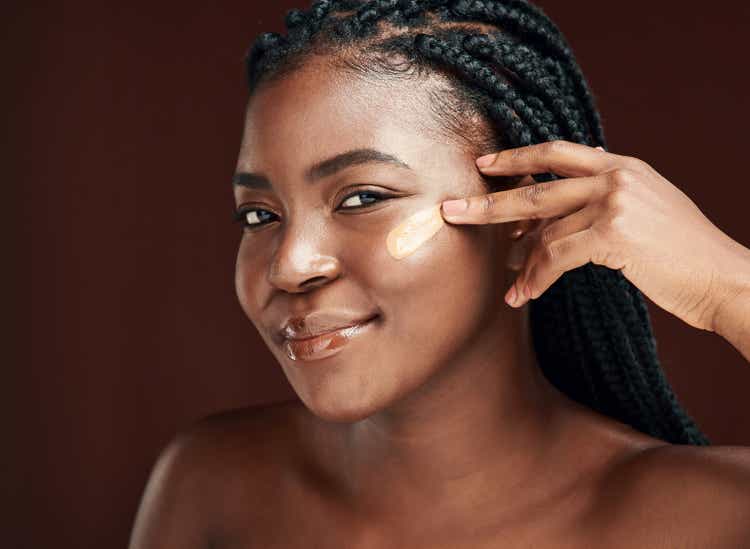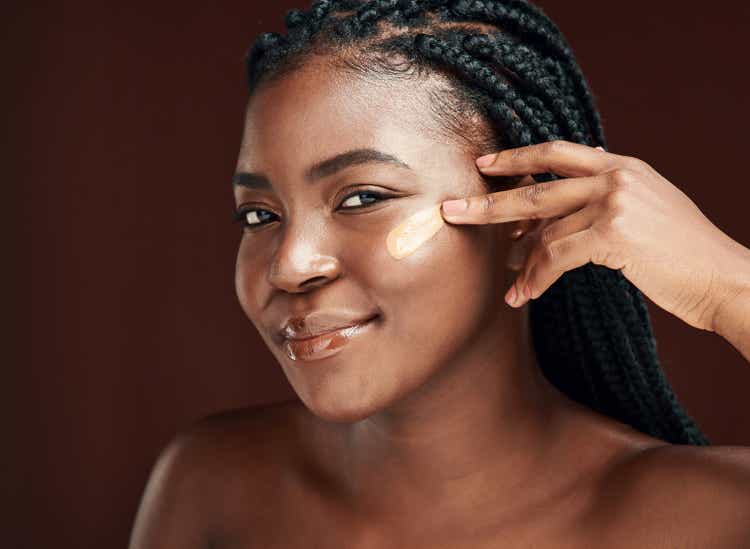
Jay Yuno/E+ via Getty Images
In 2021, Lindsay Drucker Mann left a successful nearly two-decade stint at Goldman Sachs to join Oddity Tech (NASDAQ:ODD), a young beauty and wellness company.
The company, launched in 2018 by Oran Holtzman and his sister Shiran Holtzman-Erel, uses artificial intelligence to discover molecules and match consumers to products. The company’s software can be used on a smartphone to analyze skin and hair features and create melanin and hemoglobin maps.
“I was not looking to leave, but I met Oran, the CEO and co-founder… I saw his financial profile and it became extremely clear to me right away that I had never seen anything like it,” Drucker Mann said in a phone interview last week. “I had never seen a business scale as rapidly and as profitably before.”
Drucker Mann became the chief financial officer of ODD, which operates two direct-to-consumer brands, Il Makiage and SpoiledChild. The company went public last month.
“It’s combining this technology with the information that our users give us about themselves… This information allows us to actually deliver what they need, whether that is a product recommendation or a specific experience that actually allows you to win online at high scale and profitably. That’s the breakthrough for us.”
Oddity Tech (ODD) is one of the few notable initial public offerings this year — alongside Cava Group (CAVA) — opening July 19 up 35%. The company currently has a market cap of $3.1B, and is ready to capitalize on investor demand for AI applications and the never ending desire for physical perfection.
The company is part of an industry teeming with competitors, including Coty (COTY), e.l.f. Beauty (ELF), The Estée Lauder Companies Inc. (EL), Shiseido Company, Limited (OTCPK:SSDOY), LVMH Moët Hennessy (OTCPK:LVMHF) and Natura &Co Holding S.A. (NTCO). Its first earnings report — issued last week — was well-received by the market.
Shares of ODD closed up 3% for the week.
First earnings report
Last week, Oddity Tech (ODD) reported revenue of $151.3M for the second quarter compared to $97.7M a year earlier, and exceeding the midpoint of the company’s preliminary estimates. Diluted EPS of $0.52 compared to $0.29 in the second quarter of 2022.
For the third quarter, revenue should come in at between $81M and $85M, and adjusted diluted EPS between $0.13 and $0.15. For the full year, the beauty company expects net revenue between $475M and $480M, above prior expectations for $453M and adjusted diluted EPS is set to come in between $1.11 and $1.17, above the previous forecast of $1.06.
Seeking Alpha analyst Donovan Jones was among the first to write about the company, saying he was impressed with the financials.
“It’s one thing to have a high growth company, and have revenue really growing fast. Their revenue was high for a private company and accelerating,” Jones said in a video interview last week. “It’s also really rare to have a company that’s growing really fast and that’s generating operating profits.”
Jones noted that ODD saw more than 80% growth in the first quarter. “Accelerating high growth, operating profits and it was generating a very high amount of operating cash,” Jones said. “That’s three out of three, that’s just completely hitting out of the ballpark.”
Beauty and wellness
Oddity Tech (ODD) has big plans, with brands number three and four already in the works, and both organic and M&A possibilities ahead.
In fact, in April, Oddity Tech (ODD) said it was investing more than $100M to acquire and expand biotech startup Revela, which developed two molecules, ProCelinyl, which boosts hair growth, and Fibroquin, an anti-aging ingredient.
In terms of organic success, Drucker Mann noted that ODD’s second brand, SpoiledChild, which launched in February 2022, scaled to $50M of gross revenue in its first 12 months, what she says may be one of the most successful direct-to-consumer brand launches across any vertical of all time.
Globally, revenue in beauty and personal care is expected to total $579B in 2023, according to Statista. The market is expected to grow annually by 3.53% for the next five years. In other words, the potential total addressable market is huge.
That said, some dermatologists suggest a less-is-more approach, noting that sunscreen is the best skincare available on the market.
“There’s very little evidence to support that you need any of this stuff,” said Timothy Caulfield, a Canada Research Chair in Health Law and Policy at the University of Alberta and author of “Is Gwyneth Paltrow Wrong About Everything?”
“Most consumers know this but they feel compelled to use it anyway,” Caulfield said. “That’s how strong these pressures are to look younger.”
Dr. Jules Lipoff, a dermatologist in Philadelphia and professor at the Lewis Katz School of Medicine at Temple University, said that many such products are likely to only have a temporary effect, such as exfoliants.
“If you get a mask or you get some sort of peel or treatment, yes, it’s going to make you feel brighter, but it doesn’t change any underlying physiology,” Lipoff said in a video interview. “I think of it as a consumer luxury good: It’s a great experience in the moment, but doesn’t really change anything.”
Gross margins and super efficiency
Seeking Alpha analyst Jones looks forward to ODD’s first full quarter as a public company to see if the beauty company can continue to deliver strong growth and profitability. He has some concerns of the direct-to-consumer model, which has in some cases — namely Peloton Interactive (PTON) and Stitch Fix (SFIX) — flamed out.
“Direct-to-consumer is more expensive, but of course the concept is you get all this data and you can be more efficient and you get much higher margins and so that offsets the higher expense and whatnot,” Jones said. “Whether or not they’re going to be able to bring any special, extra special sauce where others have failed is a question mark.”
Seeking Alpha analyst The Value Investor is excited about ODD but not quite ready to jump in.
“I am quite interested in Oddity, as its growth has been impressive and while shares rose sharply in the first day of trading, overall valuations look quite reasonable,” the analysts wrote in a July 20 post.
But risks include “volatile year-over-year growth, the fact that the company works with a limited number of suppliers due to its rapid growth, and risks of disruption to shipping.”
The Value Investor also hesitates over the potential longevity of the company. “These brands are new and could be somewhat of a hype, making it hard to see if this is and becomes an established brand, and at which levels sales will mature.”
For Drucker Mann, the business model works because ODD does two things very well: great tech and great physical products.
“These two muscles working together is really hard and that’s part of our secret sauce,” Drucker Mann said. “We are running really hard against a very, very large market opportunity. We’re never sitting still.”
“We ensured that the unit economics were going to work from the beginning and we became profitable early on. It’s built into the fabric of our organization. And because of the types of products that we sell, and you’ll see it, our gross margins are really, really high, and we’re super efficient at how we convert users into customers.”








